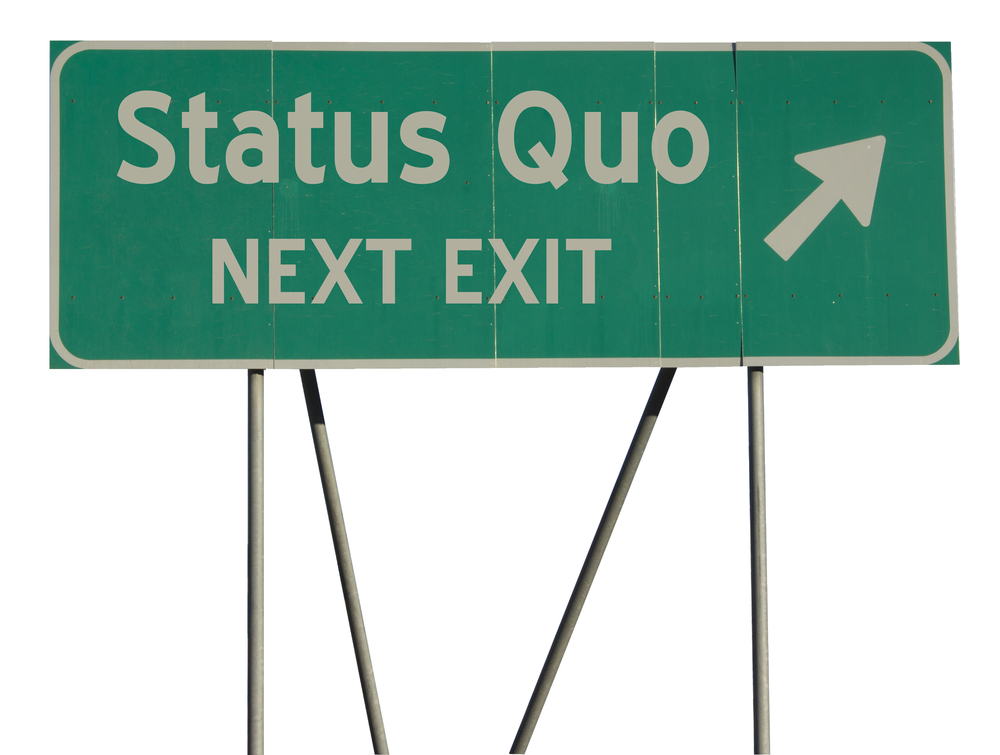Browsing the Dynamics of Status in Legal Equipments: A Holistic Technique
In the world of legal systems, the idea of condition quo holds a substantial duty in shaping the structure upon which laws and policies are constructed. By delving into the detailed interaction of various variables influencing the lawful status quo, one can discover nuanced understandings that lead the method for notified decision-making and strategic preparation.
The Value of Condition Quo Analysis
In legal process, performing a comprehensive status analysis is paramount to comprehending the existing state of affairs and providing a foundation for notified decision-making. This evaluation includes a comprehensive review of existing conditions, agreements, and circumstances that shape the context within which lawsuits are being considered. By assessing the standing quo, attorneys can identify vital stakeholders, responsibilities and legal rights, prospective threats, and chances for resolution.
In addition, delving into the status promotes the identification of any voids or incongruities that may exist, shedding light on areas that need attention or clarification. This process aids in setting practical expectations and developing strategies that straighten with the dominating conditions. Understanding the status is important for establishing a roadmap that overviews legal proceedings in the direction of efficient outcomes while reducing unintended effects.
Eventually, a thorough status analysis serves as a cornerstone for sound lawful advice and critical planning. It enables lawful experts to browse intricacies, expect obstacles, and tailor their technique to accomplish positive outcomes for their customers.
Factors Influencing Legal Status
Considering the elaborate internet of laws, policies, and social norms, what are the main aspects that form and affect the lawful standing quo in modern legal systems? Numerous vital aspects play critical functions in determining the legal standing quo within a legal system. In addition, political dynamics and the balance of power within a lawful system can heavily affect the lawful standing quo.
Strategies for Standing Quo Management
Reliable administration of the lawful standing quo needs a strategic method that recognizes the vibrant nature of lawful systems and the diverse variables affecting them. One essential strategy for standing quo monitoring is regular tracking and analysis of lawful growths. This entails staying upgraded on new laws, guidelines, and judicial choices that could influence the existing lawful landscape. By proactively keeping track of these adjustments, lawful specialists can expect prospective difficulties and adjust their approaches accordingly.

Furthermore, effective communication and partnership among stakeholders are vital techniques for managing the condition quo in lawful systems. By fostering open dialogue and cooperation between policymakers, lawyers, and various other pertinent parties, prospective problems can be dealt with proactively, and remedies can be established collaboratively to preserve a stable lawful setting.
Obstacles in Status Adjustment
:max_bytes(150000):strip_icc()/quidproquo.asp-final-68d4c6cf51ff49aaae585b51d126a1a8.png)
In addition, the lack of clear standards for navigating status quo changes can create uncertainty and ambiguity. Lawful experts often discover themselves in uncharted area when attempting to challenge existing standards or incorporate new legal frameworks. This can result in hesitancy and reluctance to deviate from acquainted methods, further hindering the adaptation process.

Executing Alternative Methods
Incorporating a detailed perspective right into lawful methods is essential for addressing the multifaceted obstacles of contemporary lawful systems. Executing holistic techniques includes a change towards seeing legal concerns as interconnected components of a bigger system as opposed to isolated events. This needs a positive position that considers not just the instant lawful implications but also the broader social, financial, and moral impacts of legal choices.
One secret read more element of executing all natural techniques is fostering interdisciplinary partnership within legal groups. By uniting specialists with varied histories such as law, psychology, business economics, and sociology, a more nuanced understanding of complicated legal problems can be accomplished. This collective technique makes it possible for lawful practitioners to develop much more efficient methods that make up a vast array of variables affecting the results of lawful instances.
In addition, welcoming modern technology and data-driven understandings is critical in executing all natural methods in legal systems. Leveraging tools like artificial intelligence for lawful study, anticipating analytics for case end results, and information visualization for providing complicated information can improve decision-making processes and enhance overall legal end results. By integrating these technical innovations into lawful practice, a much more alternative and effective strategy to attending to legal challenges can be attained.
Final Thought
In conclusion, navigating the characteristics of status in legal systems calls for a detailed understanding of the importance of status analysis, the various variables influencing lawful condition quo, effective approaches for condition quo management, and the obstacles in condition quo adaptation. Applying alternative strategies is necessary for effectively handling and adapting to the condition quo in lawful systems. It is vital for lawful specialists to frequently assess and adapt to the changing dynamics of the status to make sure effective and effective legal end results.
Thinking about the elaborate web of legislations, laws, and social standards, what are the main elements that form and affect the lawful standing quo in contemporary legal systems? Several key variables play critical functions in establishing the lawful condition quo within a lawful directory system. It is the interaction of these variables that collectively form and influence the legal standing quo in contemporary legal systems.
Reliable management of the legal status quo requires a strategic technique that acknowledges the dynamic nature of lawful systems and the diverse factors influencing them.In conclusion, navigating the dynamics of standing quo in legal systems calls for an extensive understanding of the significance of condition quo analysis, the numerous factors affecting lawful standing quo, effective strategies for condition quo administration, and the difficulties in standing quo adaptation.
Comments on “Demystifying Status Quo Meaning in Legal Terms: Trick Insights”